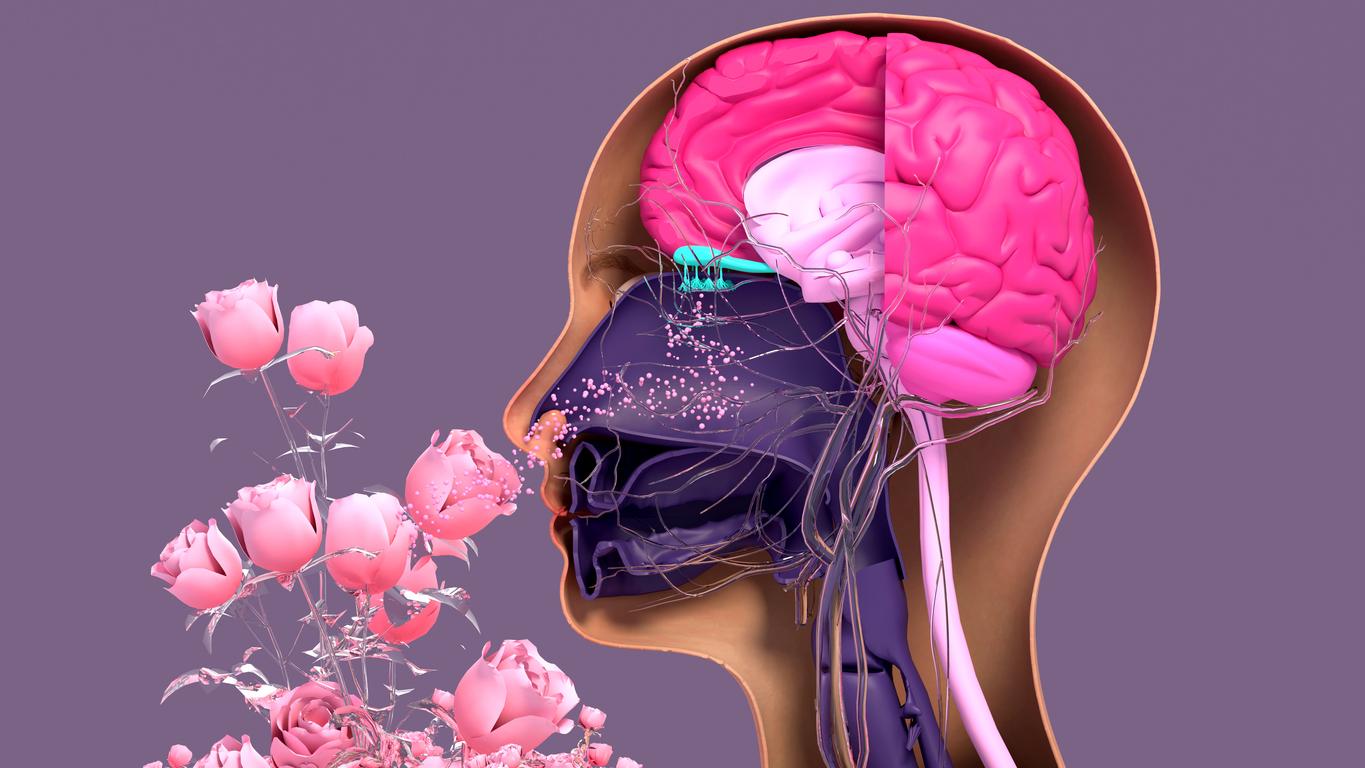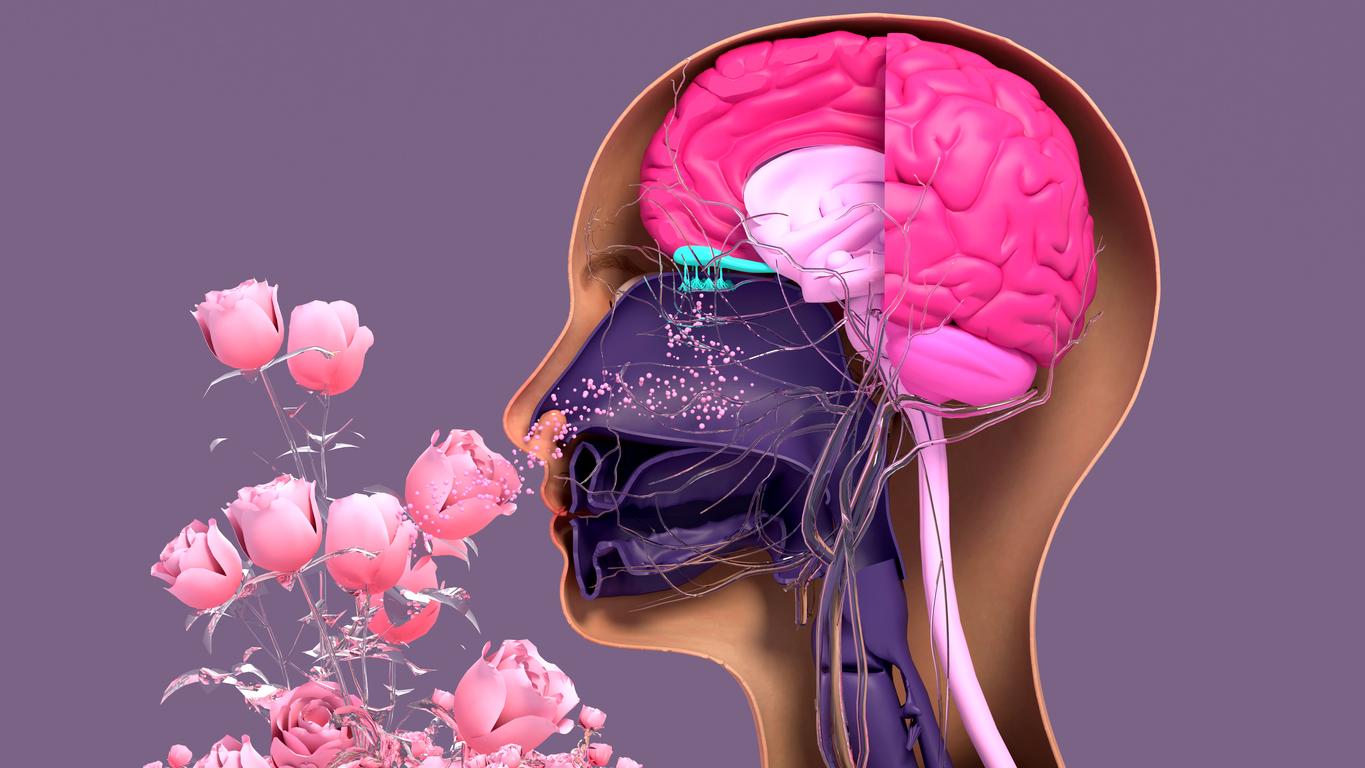“Every time I smell something that stinks, it smells the same“, says Perrine, recently cured of Covid-19. The young woman, who had lost her taste and smell, finds them little by little, to her great relief. But with an additional surprise… “a weird mix of hay and metal” tickles her nostrils when exposed to an unpleasant smell. If ordinary mortals instantly identify nauseous odors – heavy perspiration, fecal matter, rising sewers… – Perrine cannot identify what is wrong and only has this hybrid odor as an olfactory marker.
This astonishing symptom, Perrine is not alone in experiencing it. Some ex-Covid patients report a permanent smell of smoke, without its proven presence, while others have the impression of smelling gasoline. This manifestation is not unknown, this is fantasy, a medical term for forms of olfactory hallucinations. Professor Stéphane Hans, specialist in the ENT sphere at Foch Hospital (Suresnes) and co-signatory of a study on the loss of taste and smell linked to Covid-19, tells us more.
Top Santé: how do we explain anosmia due to Covid-19?
Stephane Hans. It is estimated that there are two types of anosmia caused by SARS-CoV2: a respiratory (mechanical) form, a neurological form. In the first case, an edema forms at the level of the olfactory cleft (at the very top of the nose), which prevents odors from being correctly transmitted to the brain. The neurological form would paralyze the sense of smell higher up, at the level of the olfactory bulb and therefore of the brainstem. This second form usually takes longer to recover.
Once cured, how do you recover your sense of smell?
Let’s remember how the sense of smell works: odoriferous molecules enter through the nose, they go up and are picked up in the brain by specific cells. The mechanism is a kind of puzzle where each odoriferous molecule has its receptor in the brain. This is what allows us to recognize odors and build up an olfactory library, and an olfactory memory (Proust’s madeleine!). In some patients, the sense of smell returns naturally after Covid-19. In others, the process is accelerated with corticosteroids to reduce edema which can block the uptake and recognition of scents. But other patients testify to phantom, unexplained, strange odors when they regain their ability to smell.
What are these strange smells?
It is necessary to distinguish the phantosmias (we also say phantosmias) from the parosmias. Phantosmias are olfactory hallucinations, of which patients are often aware. They occur in the absence of odor. They are often observed after head trauma, in a context of epilepsy, or in psychiatric illnesses… Parosmia describes the distortion of an olfactory perception when one smells an odor. They are triggered by exposure to odors. Most are viewed unpleasantly. For example, a patient who drinks tea will say that he does not recognize tea but smells of sewage. It’s not necessarily unpleasant… parosmia occur especially after an infection such as Covid 19. Their prevalence is estimated at 30% after an olfactory disorder.
How do we explain them?
The cellular explanation of the parosmias is not clear: it evokes a partially incomplete or aberrant neuronal regeneration at the level of the peripheral cells which capture the odoriferous molecules. They might work similarly to tinnitus. These are caused by the destruction of neuro-sensory cells in the inner ear. When hearing is working properly, each cell picks up its own frequency. If a cell is damaged without being completely destroyed, it becomes sensitive to another frequency (than its original frequency) and sends erroneous information to the brain. But this interprets it as a real signal, hence the appearance of tinnitus. It is thought that phantom odors could be explained in a similar way, by olfactory cells not picking up odors correctly (or perhaps only part of the spectrum) and leading to confusion in the brain.
But for the moment these are only hypotheses…?
Absolutely, olfactory hallucinations and parosmias are not yet mastered by researchers. It must be said that taste and smell are somewhat the “poor relation” of the senses studied… Until now, few doctors were interested in them. We tended to underestimate anosmia and ageusia (loss of smell and taste). Who, however, were not born with the Covid-19! In particular, the flu has always caused it, even if it is less frequent than with Covid-19.
In the meantime, what to do to fight against these phantom odors?
It is necessary to give reference marks to the brain, to re-educate it. So we recommend recreating an olfactory library by breathing in different smells every day. You can use smells from home: coffee, laundry, strong scents. Or use a children’s game like the scent lotto. Twice a day, for 10 to 15 minutes, practice smelling, this helps to reactivate the affected cells.
Read also:
- A cinnamon test to detect the coronavirus
- Conjunctivitis, a symptom of the coronavirus?


















